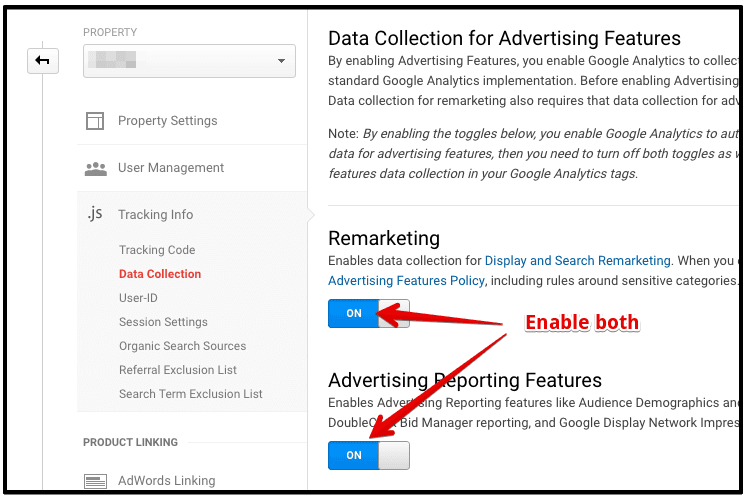The Advantages of Using Remarketing In Google Analytics
The Advantages of Using Remarketing In Google Analytics
Blog Article
Remarketing in Google Analytics: Changing Site Visitor Data Into Sales
The capacity to specifically target audiences based on their behavior and preferences opens up doors to a world of opportunities, pushing businesses towards sustainable growth and profitability. Via a careful evaluation of visitor actions and a tailored remarketing technique, organizations can browse the digital landscape with accuracy and finesse, unraveling the real possibility of their online presence.

Benefits of Remarketing in Google Analytics
Remarketing in Google Analytics supplies organizations the chance to reconnect with web site visitors who have revealed interest in their services or items, therefore raising brand name visibility and conversions. By leveraging this powerful tool, businesses can stay top-of-mind with potential consumers that have already engaged with their internet site. One of the vital advantages of remarketing is the capacity to target specific target markets based on their habits on the internet site, enabling customized messaging and tailored advertising projects.
Moreover, remarketing in Google Analytics can aid businesses raise their conversion prices by re-engaging with site visitors that may not have made a purchase or finished a preferred action on the web site throughout their preliminary check out. This targeted method can lead to higher conversion prices and eventually drive more sales. In addition, remarketing can additionally help organizations build brand name loyalty and trust by maintaining constant interaction with prospective consumers throughout their buying trip.
Establishing Remarketing Campaigns
When initiating remarketing projects in Google Analytics, businesses need to carefully intend and execute calculated targeting tactics to successfully reach their desired target market. The initial step in establishing remarketing campaigns is to specify clear objectives. Whether the objective is to raise internet site conversions, promote details products, or increase brand name recognition, having a well-defined goal will certainly direct the whole campaign approach.
Next, services require to produce target market listings based upon details requirements such as site visitors, individuals that deserted their shopping carts, or those that engaged with specific content. These lists enable for targeted messaging customized per section of the target market, increasing the chances of conversion.

Lastly, companies must establish up conversion monitoring to determine the success of their remarketing projects properly. By assessing the efficiency information, businesses can optimize their advocate better results and higher ROI.
Leveraging Audience Segmentation for Remarketing
Using target market division is an essential approach for improving the efficiency of remarketing campaigns in Google Analytics (What Is “Remarketing” In Google Analytics?). By splitting your web site visitors right into unique teams based on their habits, demographics, or rate of interests, you can customize your remarketing initiatives to target these certain sections with appropriate ads. Audience division enables you to produce more customized and targeted projects, raising the possibilities of re-engaging site visitors and driving conversions
Segmenting your target market enables you to deliver personalized messaging that resonates with each team's needs and preferences. For instance, you can produce separate remarketing checklists for individuals who abandoned their purchasing carts, saw details product web pages, or downloaded a particular source. By comprehending the various motivations and rate of interests of these segments, you can craft engaging advertisement creatives that are more probable to record their attention and motivate them to revisit your site.
Additionally, target market segmentation also aids you optimize your ad spend by focusing on high-value sectors that are most likely to convert - What Is site “Remarketing” In Google Analytics?. By assessing the efficiency of each segment, you can allocate your budget better and make best use of the return on your remarketing investment
Studying Remarketing Performance Metrics
To successfully assess the success of remarketing projects in Google Analytics, analyzing crucial efficiency metrics is crucial. Metrics such as click-through price (CTR), conversion rate, expense per procurement (CPA), and return on ad invest (ROAS) provide beneficial understandings right into the efficiency of your remarketing initiatives. CTR indicates the portion of customers that clicked on your ad after seeing it, showing the ad's importance and interest your target market. Conversion rate measures the percentage of customers that completed a desired action, such as buying, after clicking on your ad. CPA helps figure out the price of getting a customer through your remarketing project, while ROAS examines the profits created for each and every dollar spent on advertising and marketing. By analyzing these metrics, you can determine areas for renovation, optimize your campaigns, and allocate budget better to make best use of the ROI of your remarketing strategies in Google Analytics.
Best Practices for Remarketing Success
Building on the foundation my sources of analyzing remarketing efficiency metrics, executing finest methods is crucial to attaining success in your remarketing endeavors. Furthermore, ensure that your remarketing advertisements are aesthetically appealing and have compelling calls to action.
Moreover, regularity capping is vital to stop ad fatigue. Pestering individuals with the very same advertisement consistently can lead to inconvenience and decreased efficiency. Examining different ad positionings, messages, and styles is additionally essential. A/B testing enables you to recognize which approaches yield the best outcomes and enhance your campaigns as necessary. Last but not least, monitor your campaigns on a regular basis, examine the data, and make data-driven decisions to constantly fine-tune your remarketing efforts for optimal influence.
Conclusion
In conclusion, remarketing in Google Analytics offers services the chance to take advantage of visitor data to raise sales and drive conversions. By using target market segmentation, assessing efficiency metrics, and executing best practices, businesses can customize their remarketing efforts to target high-value segments effectively. With engaging advertisement creatives and conversion tracking, organizations can construct brand commitment and trust fund, ultimately optimizing the impact of their advertising methods.
With a thorough analysis of site visitor actions and a customized remarketing approach, organizations can navigate the electronic landscape with precision and skill, deciphering the real potential of their on-line visibility.
One of the crucial benefits of remarketing is the capability to target specific audiences based on their habits on the internet site, more enabling for personalized messaging and tailored advertising and marketing campaigns.
Furthermore, remarketing can additionally assist organizations develop brand commitment and trust fund by maintaining constant interaction with potential customers throughout their purchasing trip.
Metrics such as click-through price (CTR), conversion price, expense per procurement (CERTIFIED PUBLIC ACCOUNTANT), and return on ad spend (ROAS) offer useful understandings into the effectiveness of your remarketing efforts. By examining these metrics, you can determine areas for enhancement, maximize your projects, and allot spending plan more efficiently to take full advantage of the ROI of your remarketing approaches in Google Analytics.
Report this page